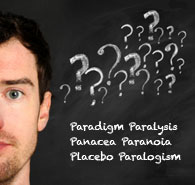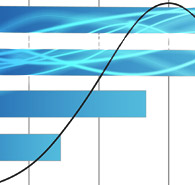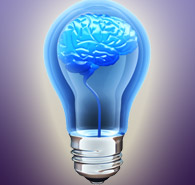Archive for the ‘Application of Neurofeedback’ Category
Thursday, February 2nd, 2012
 The field of neurofeedback has found itself subject to conflicting forces over the past decades, and it may be helpful to articulate some of the key factors that are driving our evolution as a discipline. On the one hand, we are subject to the constraints of a health care practitioner guild, and on the other we find ourselves in the much more uncertain terrain of frontier science. The demands of both are in essential conflict. The practitioner guild must represent to the world that a coherent system of practice exists, one grounded hopefully on a coherent model that is subscribed to by all of the practitioners. Guidelines and standards of practice likely follow to clarify for practitioners the choices that have been made for the sake of a credibly defensible public posture. The field of neurofeedback has found itself subject to conflicting forces over the past decades, and it may be helpful to articulate some of the key factors that are driving our evolution as a discipline. On the one hand, we are subject to the constraints of a health care practitioner guild, and on the other we find ourselves in the much more uncertain terrain of frontier science. The demands of both are in essential conflict. The practitioner guild must represent to the world that a coherent system of practice exists, one grounded hopefully on a coherent model that is subscribed to by all of the practitioners. Guidelines and standards of practice likely follow to clarify for practitioners the choices that have been made for the sake of a credibly defensible public posture.
On the other side we have the practical realities of frontier science, acknowledging that we are just beginning to understand the very powerful tool that we have at our disposal. The original hope (which I shared at the outset) was that a simple set of protocols derived from the original Sterman/Lubar research would serve our collective purposes. These simply needed to be pushed forward into general practice, while being subject merely to some subtle refinements. Our original NeuroCybernetics system was designed with very little flexibility because we did not see a need for it. This simple world view has had to be jettisoned.
(more…)
Posted in Application of Neurofeedback, Biofeedback, Clinical Methods, Neurofeedback, Professional Issues | 8 Comments »
Friday, November 11th, 2011

 On this Veterans Day we wanted to take a moment to thank all of the clinicians who have joined Homecoming for Veterans to support those in need by providing neurofeedback treatment for veterans with PTSD at no cost. Each day veterans are returning from deployments abroad and facing the challenges of life back home. We are so proud of the work that is being done by our network of clinicians, and want to encourage all of our colleagues who are practicing neurofeedback treatment to consider joining the Homecoming for Veterans team. On this Veterans Day we wanted to take a moment to thank all of the clinicians who have joined Homecoming for Veterans to support those in need by providing neurofeedback treatment for veterans with PTSD at no cost. Each day veterans are returning from deployments abroad and facing the challenges of life back home. We are so proud of the work that is being done by our network of clinicians, and want to encourage all of our colleagues who are practicing neurofeedback treatment to consider joining the Homecoming for Veterans team.
We all know this is a huge challenge. According to the Department of Veterans Affairs in June 2010, there were 171,423 deployed Iraq and Afghanistan war veterans diagnosed with PTSD, out of a total of 593,634 patients treated by the VA. But the toll goes beyond just the numbers. Every day we hear stories of vets who are returning home only to struggle with depression and alcohol and drug abuse. These health issues are leading to broken families, homelessness and in far too many cases, suicide.
(more…)
Posted in Application of Neurofeedback, Commentary, Health Care, Neurofeedback, Outreach, PTSD, Veterans | No Comments »
Monday, June 20th, 2011
 Today the web-based newspaper The Daily published a front-page article on Infra-Low Frequency Neurofeedback in application to PTSD. Along with the article there is also a six-minute video that illustrates the training procedure and basic approach. Reporter Katie Drummond did her homework on this topic over a number of months, finally coming out to our office from New York and showing up at our office with a video crew in order to try the training herself and to get acquainted with the principals. Today the web-based newspaper The Daily published a front-page article on Infra-Low Frequency Neurofeedback in application to PTSD. Along with the article there is also a six-minute video that illustrates the training procedure and basic approach. Reporter Katie Drummond did her homework on this topic over a number of months, finally coming out to our office from New York and showing up at our office with a video crew in order to try the training herself and to get acquainted with the principals.
(more…)
Posted in Application of Neurofeedback, Biofeedback, Commentary, Neurofeedback, Professional Issues, PTSD, Veterans, Video | No Comments »
Friday, April 8th, 2011
 Neurofeedback is a highly promising emerging therapy for the autism spectrum. At issue here is a tool for the direct training of brain function, one that has already shown itself highly effective in addressing a wide range of “mental health” concerns. As has been the case for other therapies, its application to the autism spectrum has been complicated by the inherent complexity of the condition we confront. In the following, we recapitulate the development of neurofeedback for the autism spectrum and give some guidance to both therapists and parents with regard to the choices open to them. Neurofeedback is a highly promising emerging therapy for the autism spectrum. At issue here is a tool for the direct training of brain function, one that has already shown itself highly effective in addressing a wide range of “mental health” concerns. As has been the case for other therapies, its application to the autism spectrum has been complicated by the inherent complexity of the condition we confront. In the following, we recapitulate the development of neurofeedback for the autism spectrum and give some guidance to both therapists and parents with regard to the choices open to them.
Our own work with the autism spectrum using neurofeedback goes back some twenty-five years. In those early days of the field, the principal application of neurofeedback was to Attention-Deficit Hyperactivity Disorder (ADHD), but the very same procedures were clearly also helpful for a variety of other issues. So it came naturally to want to try these methods also with children on the autism spectrum. These early attempts were just as likely to make things worse as they were to make things better, so we quickly placed a virtual fence around autism and decided we did not know enough to venture there. Some years later, a few practitioners in our network reported some good results with newer techniques, so the door was once again opened to working with the autism spectrum.
(more…)
Posted in Application of Neurofeedback, Biofeedback, Disregulation, Neurofeedback | 5 Comments »
Wednesday, January 12th, 2011
 We have worked for many years with Tourette Syndrome, with very equivocal results. It is clearly a heterogeneous condition that does not lend itself readily to a narrow diagnostic description. Mild expressions of the condition may respond readily to a variety of neurofeedback protocols, but more extreme presentations may be more resistant to most approaches. The following case report was provided from a child psychiatry practice in Norway. We have worked for many years with Tourette Syndrome, with very equivocal results. It is clearly a heterogeneous condition that does not lend itself readily to a narrow diagnostic description. Mild expressions of the condition may respond readily to a variety of neurofeedback protocols, but more extreme presentations may be more resistant to most approaches. The following case report was provided from a child psychiatry practice in Norway.
Bodil Solberg, MD is a specialist in Child and Youth Psychiatry and in General Medicine, specialized in diagnosing and treating neuropsychiatric disorders. Dr. Solberg also teaches and supervises cognitive behavioral therapy. Her clinic is part of the Norwegian public health care system.
(more…)
Posted in Application of Neurofeedback, Neurofeedback | 5 Comments »
Thursday, August 5th, 2010
 The Dysponesis Hypothesis The Dysponesis Hypothesis
We are always casting about for better ways to frame the work that we do in order to make it comprehensible to other professionals and lay persons. Sometime it helps to dip into past history to see how others wrestled with the same issue. One notion that has threaded its way through is that of simple inefficiency in brain regulatory function, which naturally leads to the suggestion that our training improves regulatory effectiveness through promoting higher efficiency in the regulatory mechanisms. It’s a simple concept with a certain amount of face validity, and also offers the virtue of vagueness where we are still uncertain about the details. Another slightly different theme is that the brain sometimes works against itself, that its efforts to right the ship are sometimes counter-productive.
The term dysponesis encompasses a variety of dysfunctions in which the CNS operates counter to the desired end-result. In considering the possible utility of this term in modern parlance, I am going back to an article written by George Whatmore and Daniel Kohli back in 1968 (Behavioral Science, 13(2), 102-124, (1968)), and reprinted as a book chapter in the text Mind/Body Integration (Erik Peper, Sonia Ancoli, and Michelle Quinn, editors), which was first published in 1979. The authors were two physicians in private practice.
(more…)
Posted in Application of Neurofeedback, Biofeedback, Clinical, Clinical Results, Clinical Symptoms, Disregulation, Neurofeedback, Research, Scientific | 4 Comments »
|
|
Subscribe to Email Newsletter
The EEG Info Newsletter circulates via email at least once a month. A variety of topics related to the Neurofeedback / EEG Biofeedback field are covered in over 200 articles.
|
 The field of neurofeedback has found itself subject to conflicting forces over the past decades, and it may be helpful to articulate some of the key factors that are driving our evolution as a discipline. On the one hand, we are subject to the constraints of a health care practitioner guild, and on the other we find ourselves in the much more uncertain terrain of frontier science. The demands of both are in essential conflict. The practitioner guild must represent to the world that a coherent system of practice exists, one grounded hopefully on a coherent model that is subscribed to by all of the practitioners. Guidelines and standards of practice likely follow to clarify for practitioners the choices that have been made for the sake of a credibly defensible public posture.
The field of neurofeedback has found itself subject to conflicting forces over the past decades, and it may be helpful to articulate some of the key factors that are driving our evolution as a discipline. On the one hand, we are subject to the constraints of a health care practitioner guild, and on the other we find ourselves in the much more uncertain terrain of frontier science. The demands of both are in essential conflict. The practitioner guild must represent to the world that a coherent system of practice exists, one grounded hopefully on a coherent model that is subscribed to by all of the practitioners. Guidelines and standards of practice likely follow to clarify for practitioners the choices that have been made for the sake of a credibly defensible public posture.
 Today the web-based newspaper The Daily published a front-page article on Infra-Low Frequency Neurofeedback in application to PTSD. Along with the article there is also a six-minute video that illustrates the training procedure and basic approach. Reporter Katie Drummond did her homework on this topic over a number of months, finally coming out to our office from New York and showing up at our office with a video crew in order to try the training herself and to get acquainted with the principals.
Today the web-based newspaper The Daily published a front-page article on Infra-Low Frequency Neurofeedback in application to PTSD. Along with the article there is also a six-minute video that illustrates the training procedure and basic approach. Reporter Katie Drummond did her homework on this topic over a number of months, finally coming out to our office from New York and showing up at our office with a video crew in order to try the training herself and to get acquainted with the principals. Neurofeedback is a highly promising emerging therapy for the autism spectrum. At issue here is a tool for the direct training of brain function, one that has already shown itself highly effective in addressing a wide range of “mental health” concerns. As has been the case for other therapies, its application to the autism spectrum has been complicated by the inherent complexity of the condition we confront. In the following, we recapitulate the development of neurofeedback for the autism spectrum and give some guidance to both therapists and parents with regard to the choices open to them.
Neurofeedback is a highly promising emerging therapy for the autism spectrum. At issue here is a tool for the direct training of brain function, one that has already shown itself highly effective in addressing a wide range of “mental health” concerns. As has been the case for other therapies, its application to the autism spectrum has been complicated by the inherent complexity of the condition we confront. In the following, we recapitulate the development of neurofeedback for the autism spectrum and give some guidance to both therapists and parents with regard to the choices open to them. We have worked for many years with Tourette Syndrome, with very equivocal results. It is clearly a heterogeneous condition that does not lend itself readily to a narrow diagnostic description. Mild expressions of the condition may respond readily to a variety of neurofeedback protocols, but more extreme presentations may be more resistant to most approaches. The following case report was provided from a child psychiatry practice in Norway.
We have worked for many years with Tourette Syndrome, with very equivocal results. It is clearly a heterogeneous condition that does not lend itself readily to a narrow diagnostic description. Mild expressions of the condition may respond readily to a variety of neurofeedback protocols, but more extreme presentations may be more resistant to most approaches. The following case report was provided from a child psychiatry practice in Norway.
Clinicians Bring Hope for Veterans by Honoring Those Who Served
Friday, November 11th, 2011We all know this is a huge challenge. According to the Department of Veterans Affairs in June 2010, there were 171,423 deployed Iraq and Afghanistan war veterans diagnosed with PTSD, out of a total of 593,634 patients treated by the VA. But the toll goes beyond just the numbers. Every day we hear stories of vets who are returning home only to struggle with depression and alcohol and drug abuse. These health issues are leading to broken families, homelessness and in far too many cases, suicide.
(more…)
Posted in Application of Neurofeedback, Commentary, Health Care, Neurofeedback, Outreach, PTSD, Veterans | No Comments »